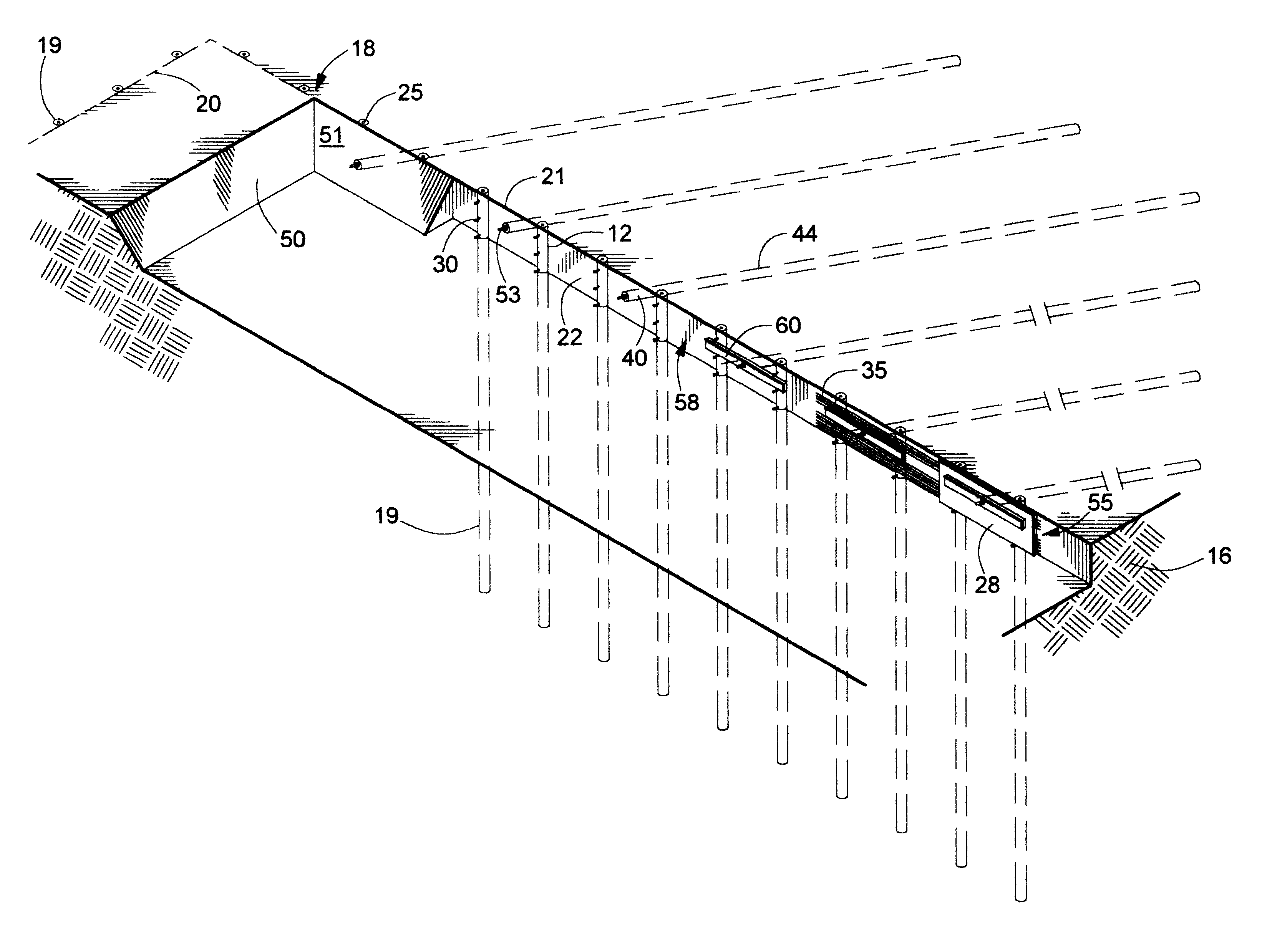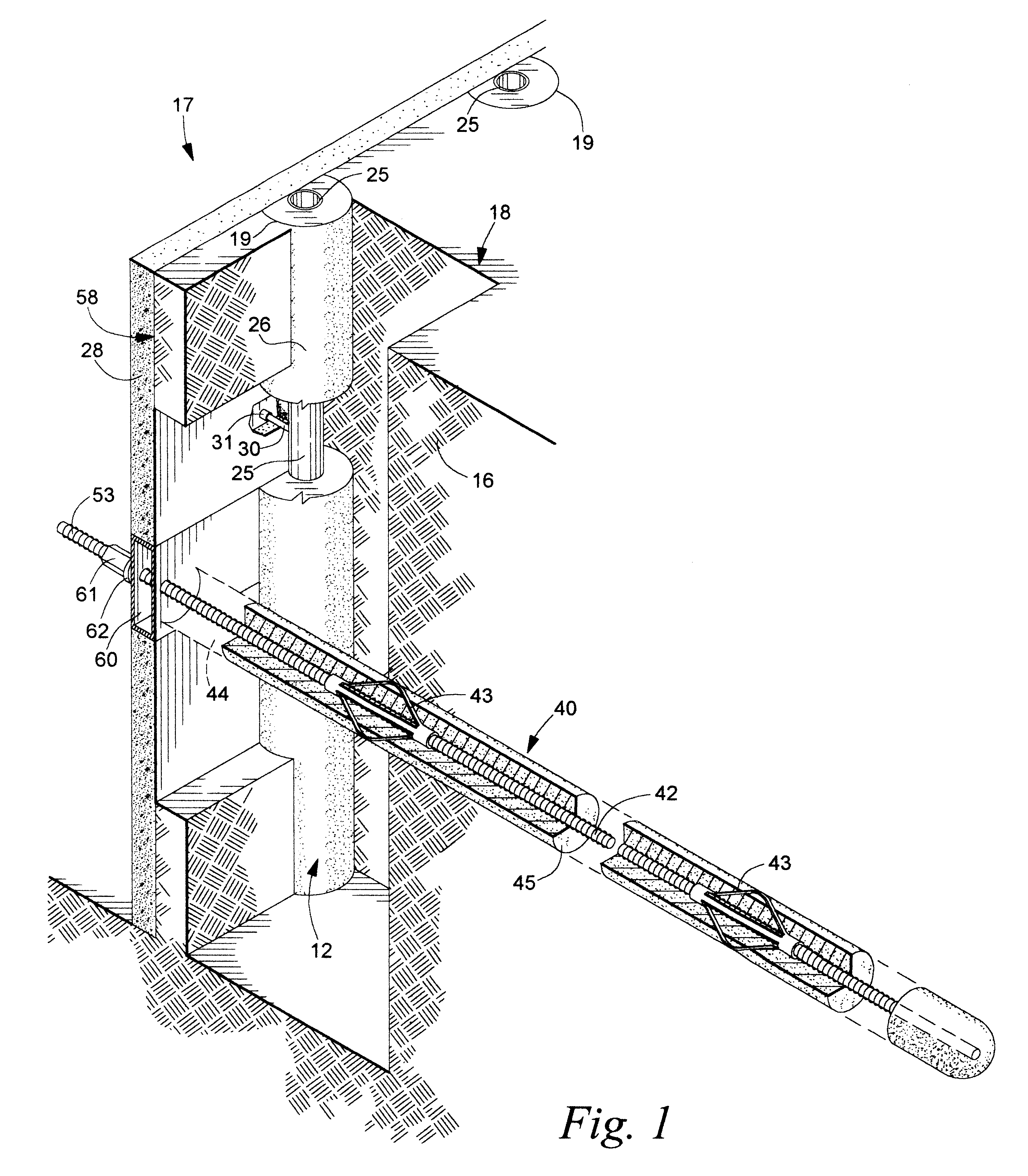Method and apparatus for a shoring wall
a technology of shoring wall and shoring beam, which is applied in the direction of shaft equipment, shaft lining, artificial islands, etc., can solve the problems of not being able to provide any vertically oriented support for soil reinforcing on mason 204 wale beams, and not being able to construct economical soil nail wall construction, etc., to achieve the effect of improving face stability
- Summary
- Abstract
- Description
- Claims
- Application Information
AI Technical Summary
Benefits of technology
Problems solved by technology
Method used
Image
Examples
Embodiment Construction
The invention provides a method and apparatus for a wall system that retains earthen material. The wall system is particularly suited to shoring below grade excavations of softer and less stable soils, gravels and sandy materials.
The method and apparatus for shoring a face of an excavation is shown in FIGS. 1 through 10. A preferred method comprises first inserting a plurality of retaining elements 12 into an earthen mass 16. The earthen mass can be any material or combination of earthen materials, such as soil, clay or rock that requires excavation for the installation of a shoring wall 17.
The earthen mass 16 includes a grade 18, which is the upper surface of the earthen mass. As detailed in FIG. 3, each of the retaining elements 12 are inserted into a bore hole 19 along a wall line 20, which runs along the grade at what will be the top edge 21 of the shoring wall. The retaining elements are inserted along the final wall line in a substantially vertical orientation to define an exc...
PUM
 Login to View More
Login to View More Abstract
Description
Claims
Application Information
 Login to View More
Login to View More - R&D
- Intellectual Property
- Life Sciences
- Materials
- Tech Scout
- Unparalleled Data Quality
- Higher Quality Content
- 60% Fewer Hallucinations
Browse by: Latest US Patents, China's latest patents, Technical Efficacy Thesaurus, Application Domain, Technology Topic, Popular Technical Reports.
© 2025 PatSnap. All rights reserved.Legal|Privacy policy|Modern Slavery Act Transparency Statement|Sitemap|About US| Contact US: help@patsnap.com



